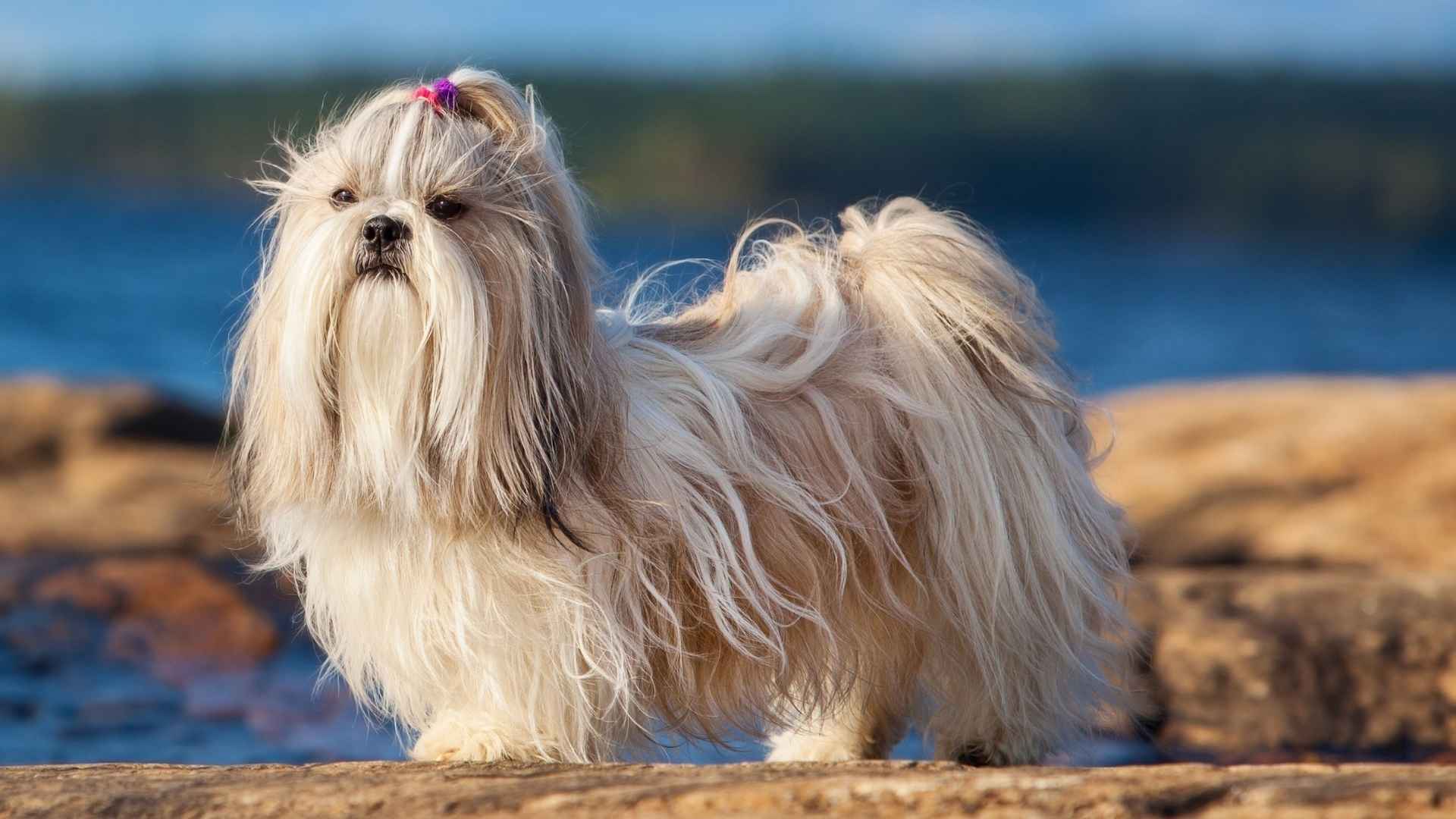Did you know that smaller dogs tend to live longer than their larger counterparts? Studies show that compact-bodied breeds not only thrive in tight spaces but also bring years of loyal companionship.
Whether you’re living in a city apartment or simply prefer a pet you can carry under one arm, compact dogs offer the perfect balance of charm and practicality.
But being small doesn’t mean being fragile—many of these breeds are sturdy, strong, and full of personality. From muscular little guardians to agile lap dogs, compact breeds pack a lot into a small frame.
In this article, we’ll explore dog breeds known for their tight, efficient builds—dogs that are easy to travel with, fit in small spaces, and bring loads of love. Let’s start!
Dog Breeds With Compact Bodies
1. Chihuahua
The Chihuahua’s structure is defined by tight muscle tone and a naturally firm posture. There’s no softness in its frame—it’s compact with intention, not cuteness. Even its gait reflects balance, giving it surprising stability for a dog of its size.
High Alert in a Small Frame
Its sharp observational skills come from centuries of close human interaction, not just instinct. Every sound, scent, or footstep registers immediately, making it quick to react within any space. That internal alert system stays active even in deep rest.
Space Efficiency With Personality
Often favored in apartment living, the breed adjusts well to tight indoor layouts without losing energy. It will stake out small corners as personal zones, then shift around confidently throughout the day. They don’t require space to command attention.
Not Always a Solo Act
Though famously bold, Chihuahuas can share their space with other canines when raised in a structured setting. Socialization early on sets the tone for balance, especially in multi-animal households. That adaptability often surprises those expecting territorial behavior from small dog breeds.
2. Pomeranian
The Pomeranian’s body is tightly packed with short, sturdy limbs supporting its brisk, buoyant movement. Beneath the dense coat lies a firm torso—not delicate, but distinctly solid for its scale. Its square build contributes to its energetic bounce and sharp cornering indoors.
Descended from Arctic Workers
Though it weighs around 3 to 7 pounds today, the Pomeranian descended from 30-to 40-pound sled-pulling Spitz dogs in the Arctic, as per Pomeranian Headquarters. That working lineage explains its high endurance and strong jaw structure. Compact doesn’t mean fragile—it means condensed strength with ancestral grit.
Suited for Tight Domestic Spaces
This small breed dog thrives in busy environments without needing large open areas to stay stimulated. They often create a “territory map” inside the home, choosing rotating resting zones throughout the day. Their ability to self-manage in confined spaces makes them low-effort house companions.
Bold in Multi-Pet Households
Well-socialized Pomeranians can co-exist with other dogs, though their pushy nature means early training matters. Their confidence often overshadows their size, especially in households with larger breeds. With guidance, they become excellent family pets without losing their spirited edge.
3. Yorkshire Terrier
Yorkshire Terriers carry a square, compact frame that supports sudden speed bursts and sharp directional changes. Their short back and straight legs offer physical efficiency, not just aesthetic charm. This build was essential in their original job—navigating tight mill tunnels during rat control.
Texture Isn’t Just for Show
Their signature floor-length coat mimics human hair in growth pattern and texture. This fine, silky coat requires care but offers a non-shedding option for sensitive households. That detail alone sets them apart from other terrier breeds known for rougher fur types.
Focused Energy in Small Quarters
Although energetic, they channel that energy in a highly controllable way indoors. Their intelligence allows them to pick up routines quickly, which makes transitions in confined spaces seamless. That’s part of why they’re dependable family dogs, not just personal companions.
Defensive Instincts, Not Delicate
Despite their small size, they’ve been documented alerting owners to gas leaks, intruders, and even medical emergencies. That instinct for sound-based threat detection remains strong. A 7-pound Yorkie named Smoky even served in World War II, pulling communication wires through narrow pipes, as mentioned in WW2 History.
4. Shih Tzu
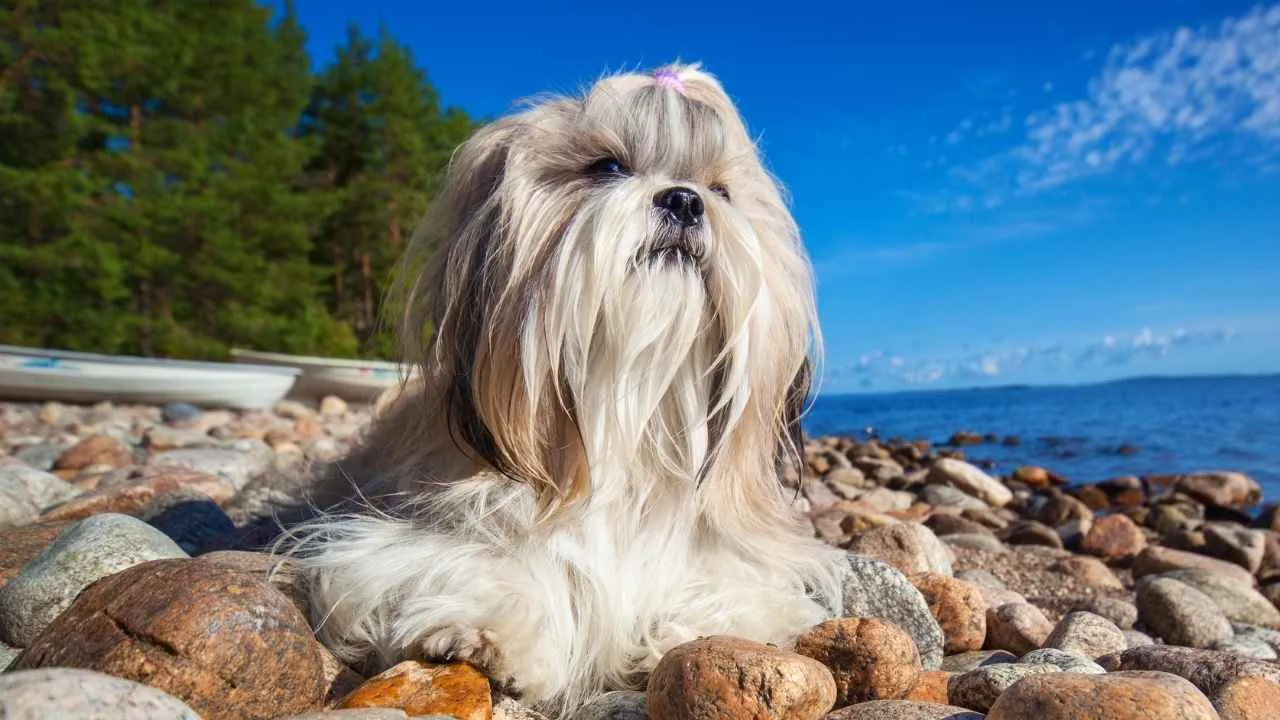
The Shih Tzu’s short legs and broad chest keep its center of gravity low, which adds to its stability. This structure helps them navigate indoor corners and tight hallways with precision. You’ll rarely see them clumsy, even on slick surfaces or rugs.
Dense Coat, Minimal Bulk
Despite their long, flowing coat, the actual frame underneath is compact and sturdy. Their size often confuses first-time owners who assume they’re larger due to the hair volume. Beneath it all lies a tightly packed body with no wasted space.
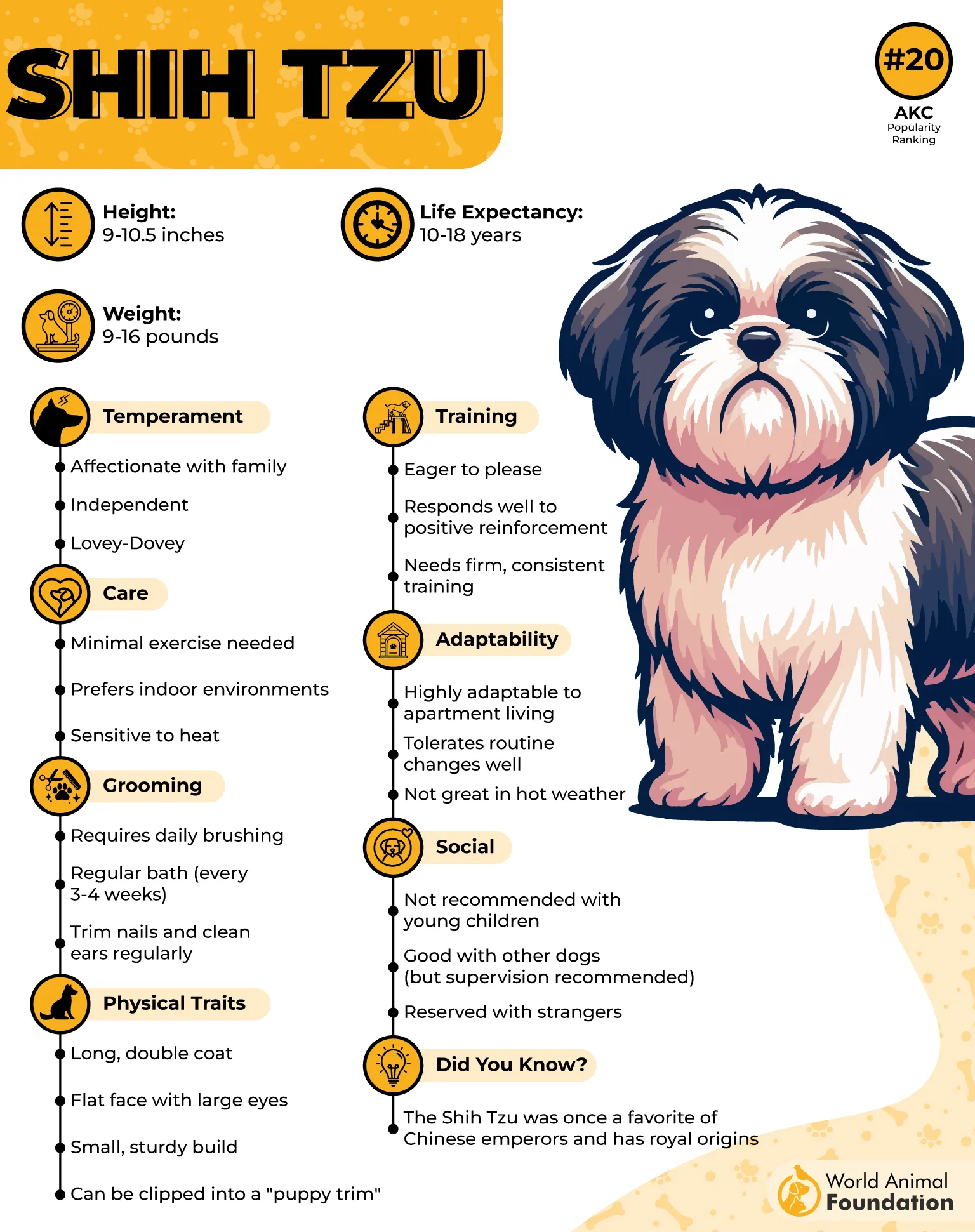
Once Fit for Palace Floors
Originally bred for Chinese royalty, they were designed to sit at foot level, not in laps by chance, but by architectural intention. Their proportions supported constant floor presence during ceremonies. The compactness wasn’t aesthetic; it had a purpose within imperial courts.
Loyalty Without Demand
Though classified among lap dogs, Shih Tzus are not emotionally needy. They shadow their owners without pushing for attention, quietly adapting to the daily pace. Among loyal dogs, few match their ability to stay close without constantly seeking engagement.
5. Papillon
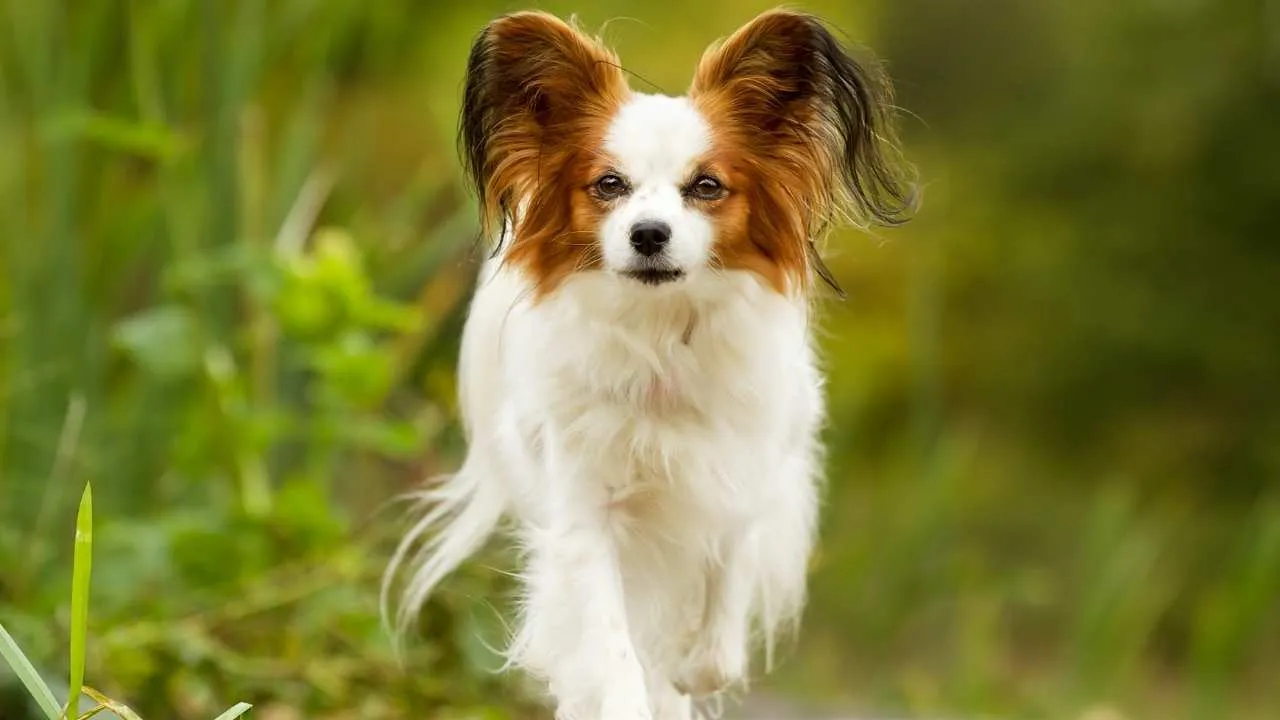
Papillons have finely structured bones that contribute to their smooth, efficient movement. Their body control allows them to shift direction quickly without losing balance. This makes them naturally suited to activities requiring coordination in tight spaces.
Ears That Help Them Read the Room
The breed’s upright, fringed ears are angled in a way that improves sound sensitivity indoors. They often react to soft footsteps or changes in tone even before others notice. This constant auditory awareness keeps them attuned to everything happening around them.
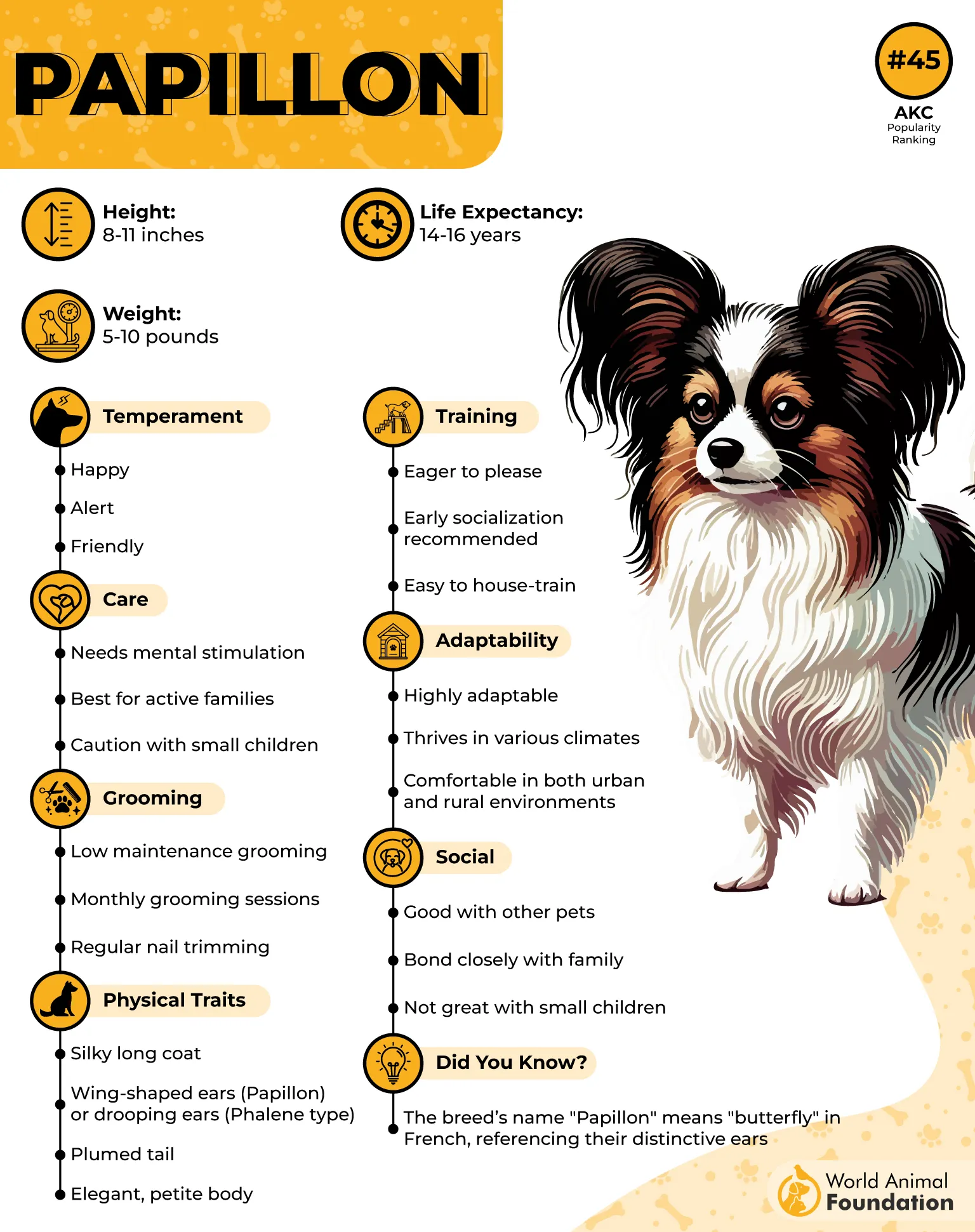
Adjusts Easily to Smaller Living Areas
Their energy is manageable in compact environments because they self-regulate movement. Rather than pacing or overexploring, they settle into cozy spaces and engage in quick, intentional activity. That rhythm fits naturally into smaller households or apartments.
Calm Expression, Sharp Senses
Papillons are considered highly affectionate dogs, yet they stay mentally alert during relaxed interactions, as PetMD claims. Their gentle nature makes them approachable without being overly dependent. Among cute dogs, few match this mix of elegance and awareness in such a compact form.
6. Toy Poodle

Beneath its signature curls, the Toy Poodle has a tight bone structure and lean muscles that support efficient movement. The compact size doesn’t hinder agility—it enhances it, especially in spaces where turning radius and footwork matter. Every part of the frame serves a function, not flair.
Historically Engineered for Precision
This breed was deliberately miniaturized from the Standard Poodle for city dwellers and to perform in French circus performances, as highlighted by the AKC. Their balanced proportions and coordination weren’t cosmetic traits but critical for complex routines. The same physical intelligence carries into how they move through modern homes.
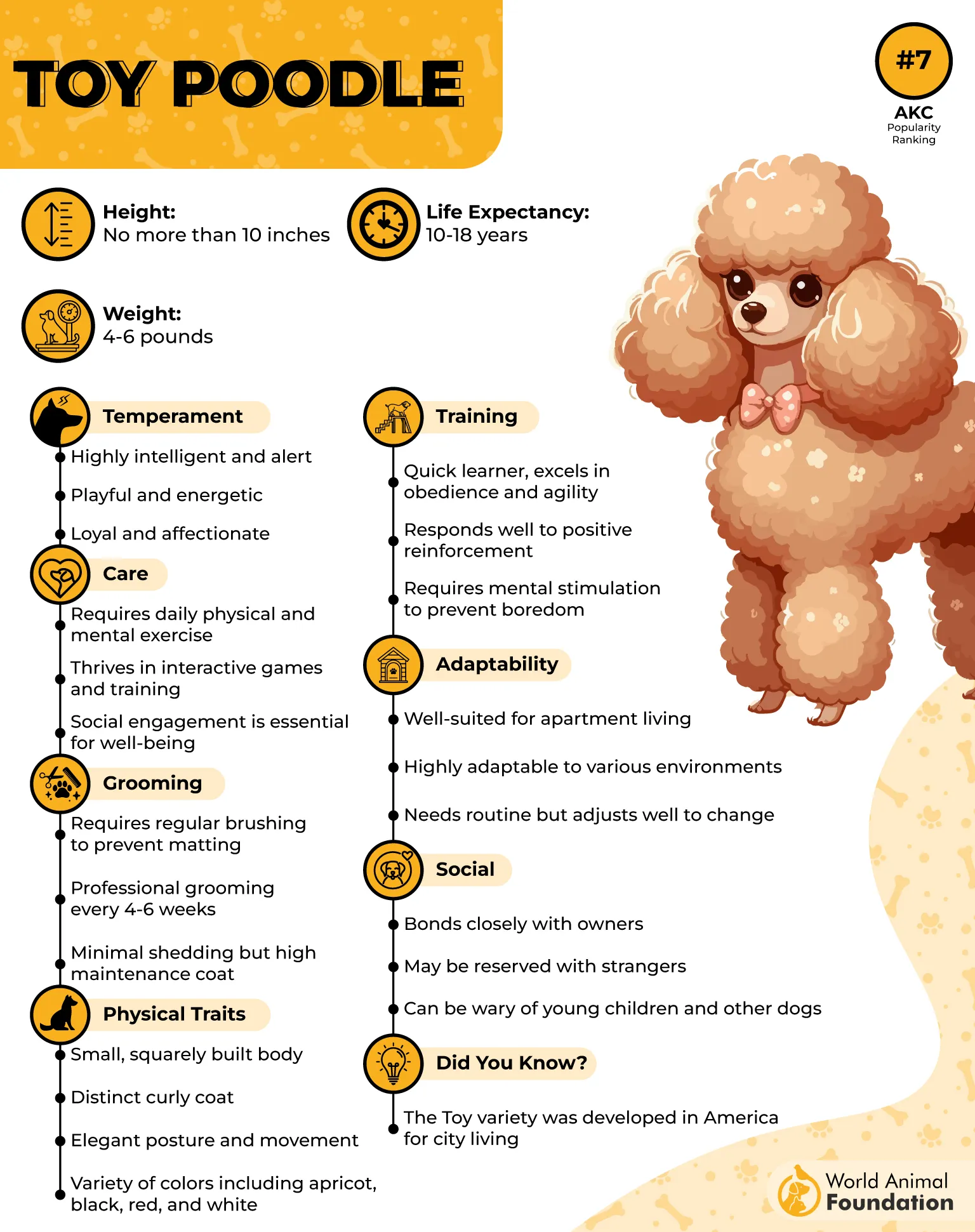
Not Just Lap-Sized, Lap-Savvy
Though part of the toy breeds category, the Toy Poodle is known for spatial awareness that surpasses expectations. They instinctively adjust posture and position when carried, cradled, or held. That physical intuition makes them easier to handle in real-world settings, including grooming or travel.
Harmonious in Group Environments
When raised with structure, they respond well to children and other pets, especially due to their sensitivity to tone and routine. Their social adaptability stems from their history as both entertainers and companions. Early exposure to noise and movement strengthens that ease.
7. Affenpinscher
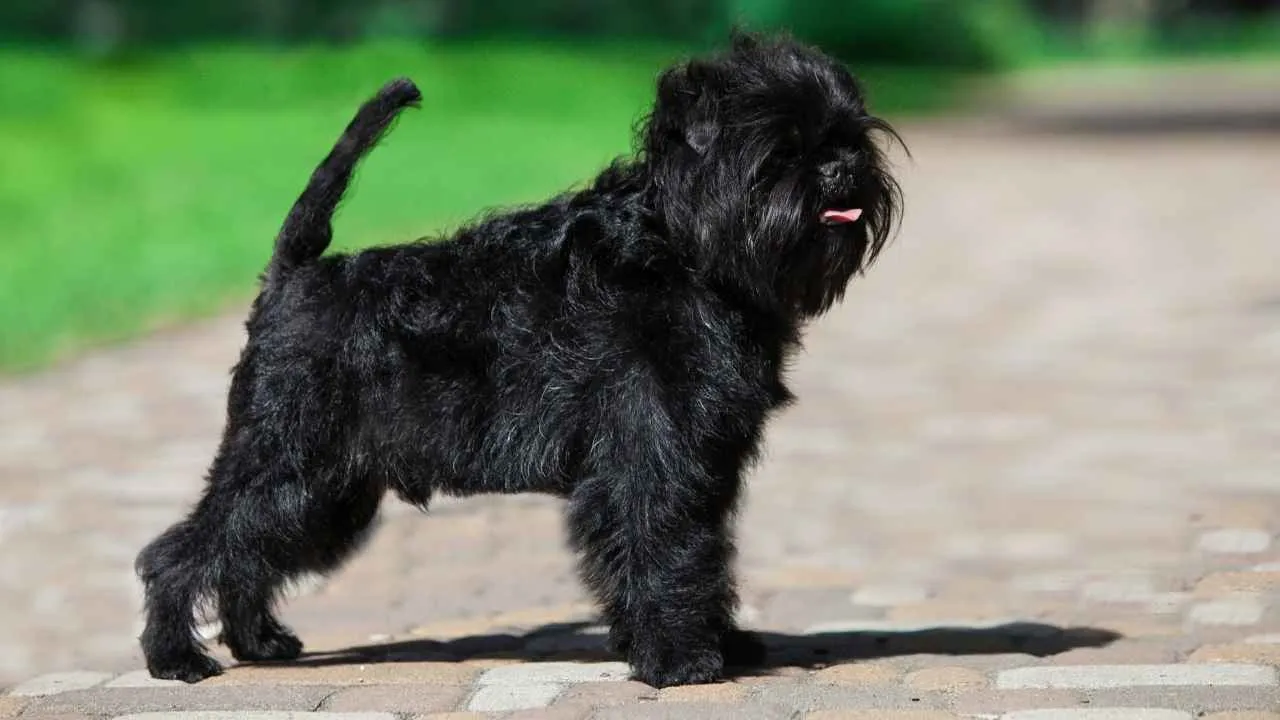
Despite being one of the smallest little dogs, the Affenpinscher carries surprising physical tension in its limbs and shoulders. Its square, sturdy stance isn’t delicate—it was built to snap at fast-moving vermin. That dense body allows for sudden, controlled bursts of movement.
Toy Breed With Working Roots
This breed originated in 17th-century Germany and was first used in stables and shops to catch rats. Its job history influences its structure—short muzzle, arched neck, and flattened chest for chasing in narrow spaces. It was never a decorative lapdog in design.
Sharp Movements, Never Sloppy
Their motion is fast and intentional, with clear joint control—nothing loose or floppy. This tight agility allows them to shift direction quickly, even in cluttered areas. It’s why they’re known to navigate tabletops or furniture edges with uncanny balance.
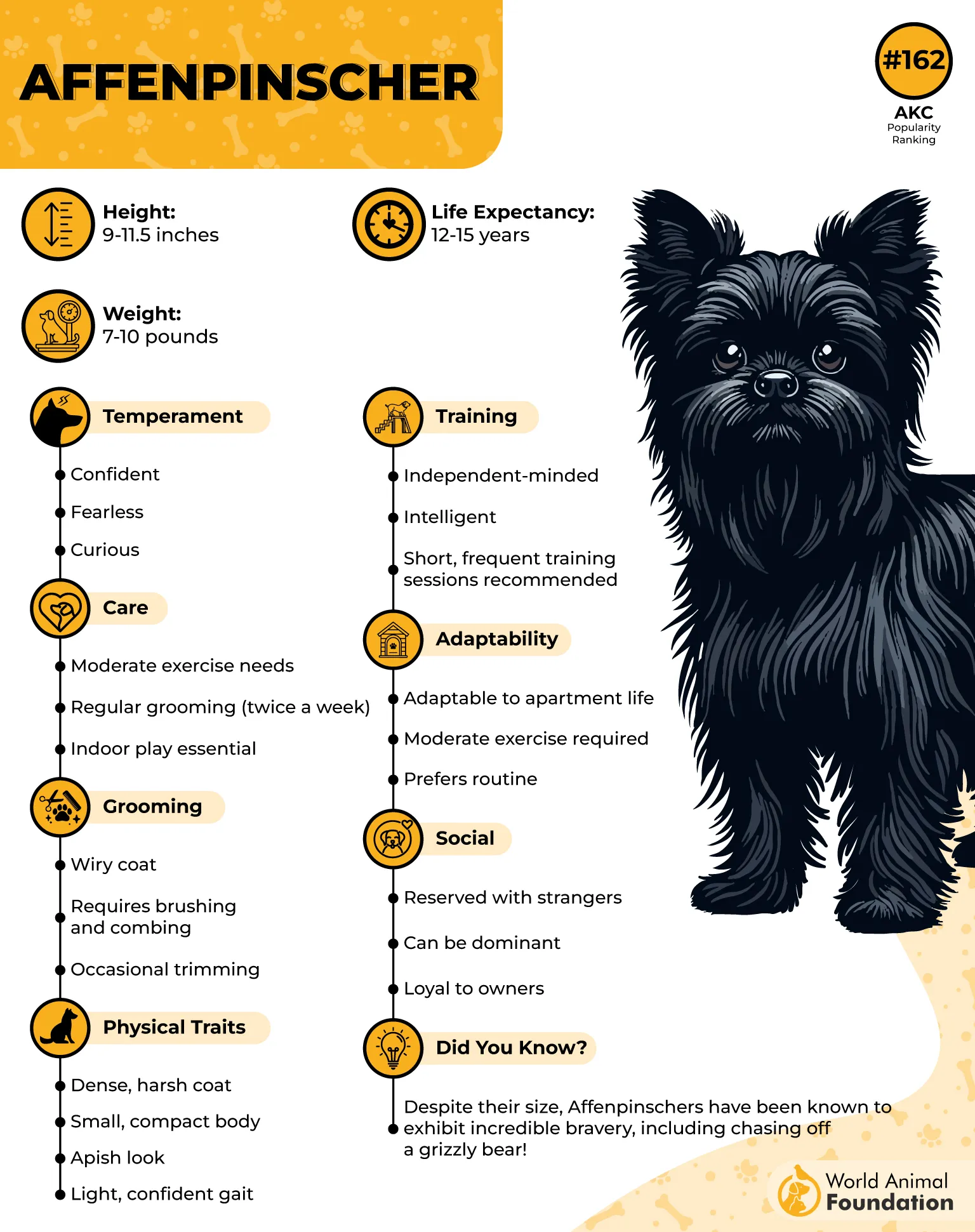
Energy with Intent
The playful personality of an Affenpinscher is channeled through tasks, puzzles, or watchfulness. They often carry or reposition small objects, mimicking their historical ratting behavior indoors. Among little dogs, few show such a blend of mischief and purpose in every movement.
8. Maltese
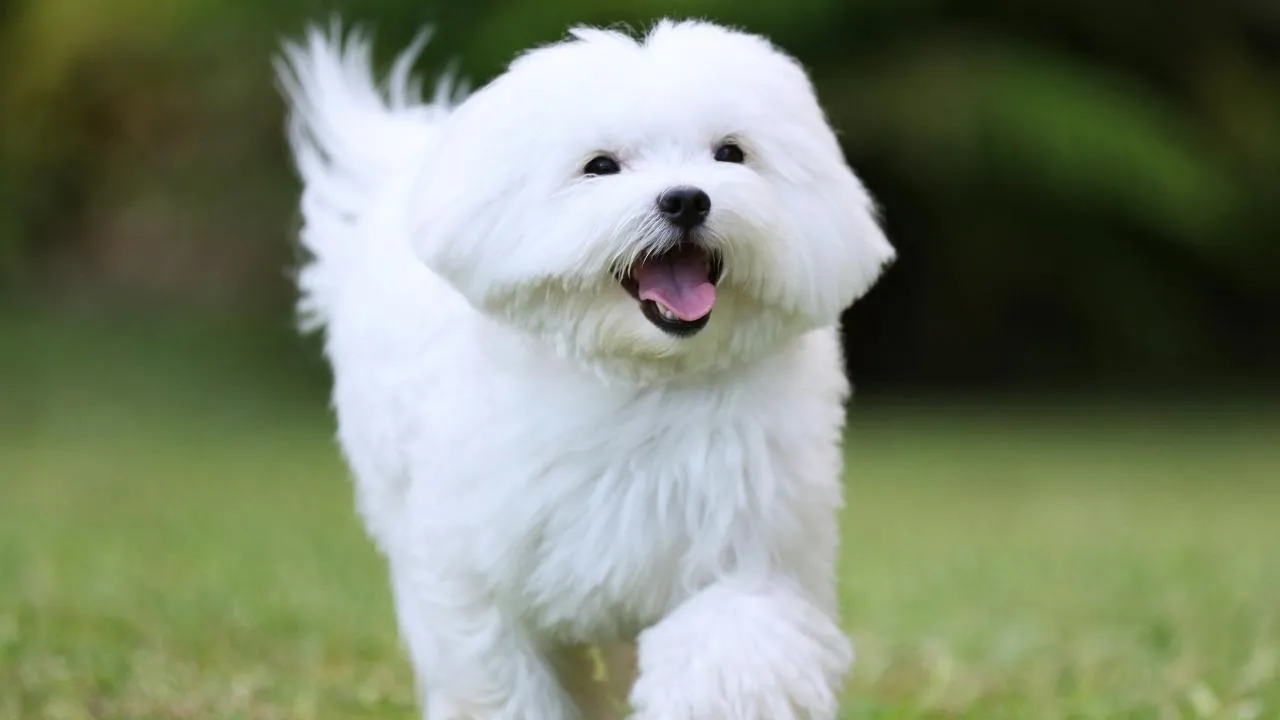
Despite their delicate appearance, Maltese dogs are built with surprisingly sturdy bone density relative to their size. The compact ribcage and straight forelegs give them an upright posture that’s more structured than flowy.
Ancient Roots With Selective Refinement
Their body shape hasn’t changed much since the breed was refined during the Roman Empire, when compactness was preferred for ease of lap carriage. The square build and tight shoulders are no accident—it was deliberately bred into them. You’ll rarely see slack or exaggerated angles in a well-bred Maltese.
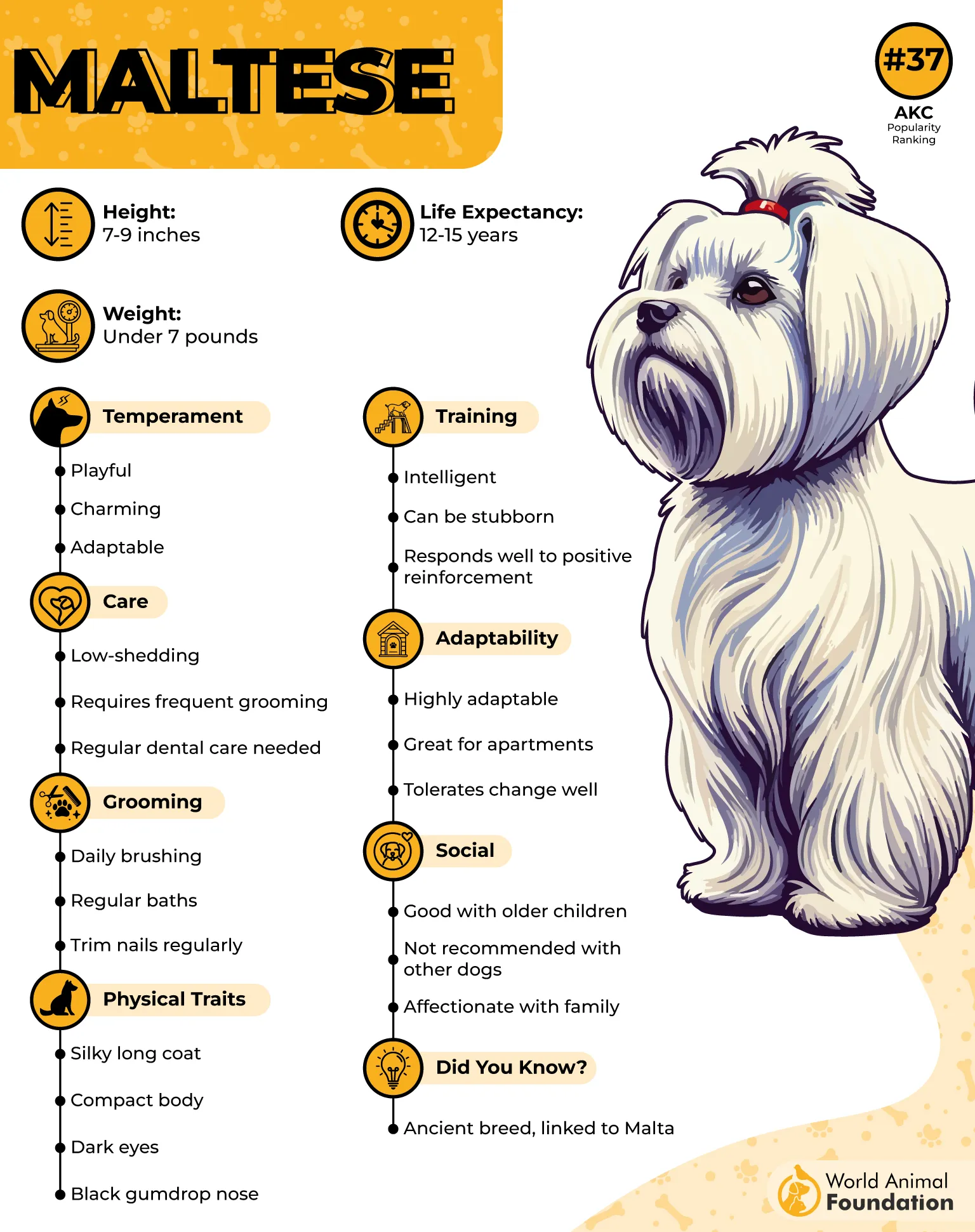
Controlled Energy in Close Quarters
They adapt remarkably well to confined interiors, where their movement becomes graceful rather than restless. Small strides and predictable pacing make them easy to manage in high-end indoor spaces. That makes them ideal among tiny dog breeds known for their stability in ornamental living.
Signature Coat, Not a Fluff Distraction
The breed’s long coat grows continuously without shedding, which was once a marker of noble breed distinction. Despite this flowing appearance, Maltese remain one of the lightest toy breeds, built for companionship, not showy proportions. The contrast between weight and coat often surprises first-time handlers.
9. Bichon Frise
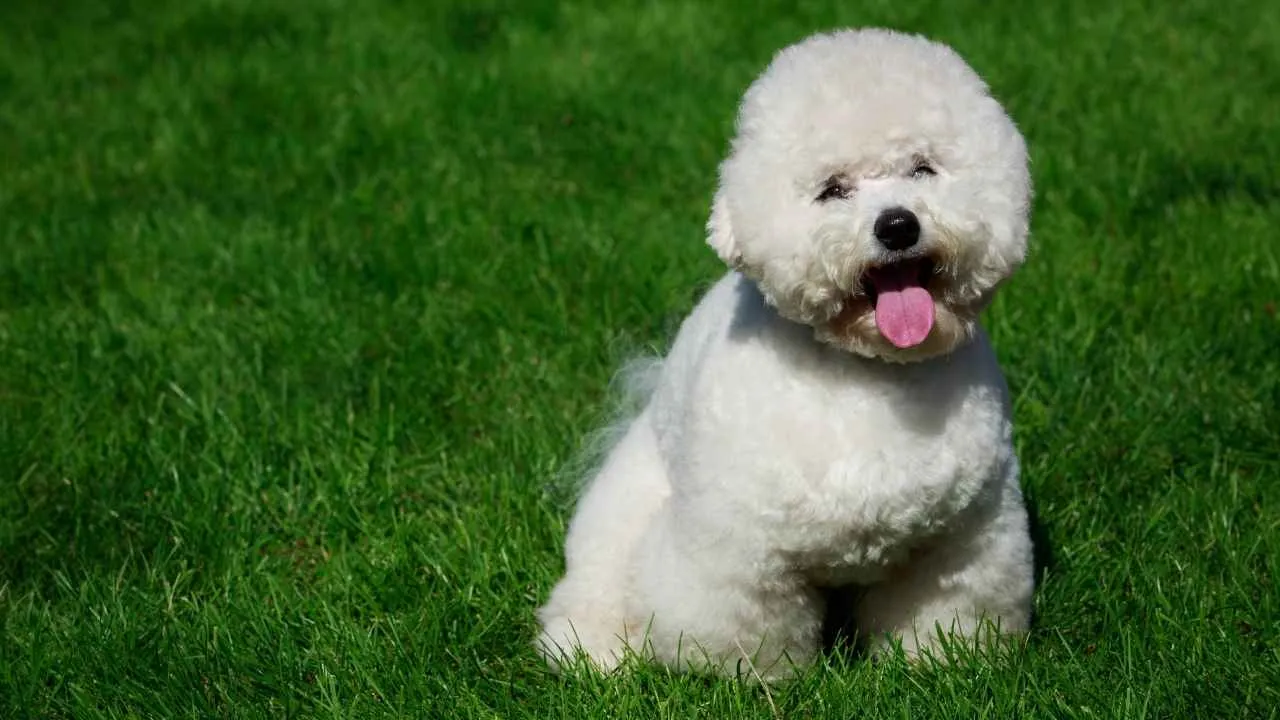
The Bichon Frise is built with a nearly equal height-to-length ratio, forming a naturally square outline. This symmetry gives it agility in tight indoor spaces without sacrificing movement. Its body stays low to the ground, yet never appears stocky or heavy.
Maritime History Influenced Form
In the 14th century, Bichons traveled with sailors across the Mediterranean, valued for their small size and sociable temperament. These long voyages shaped their tolerance for restricted environments. Their ease in cabins and ship quarters translated well to modern living.
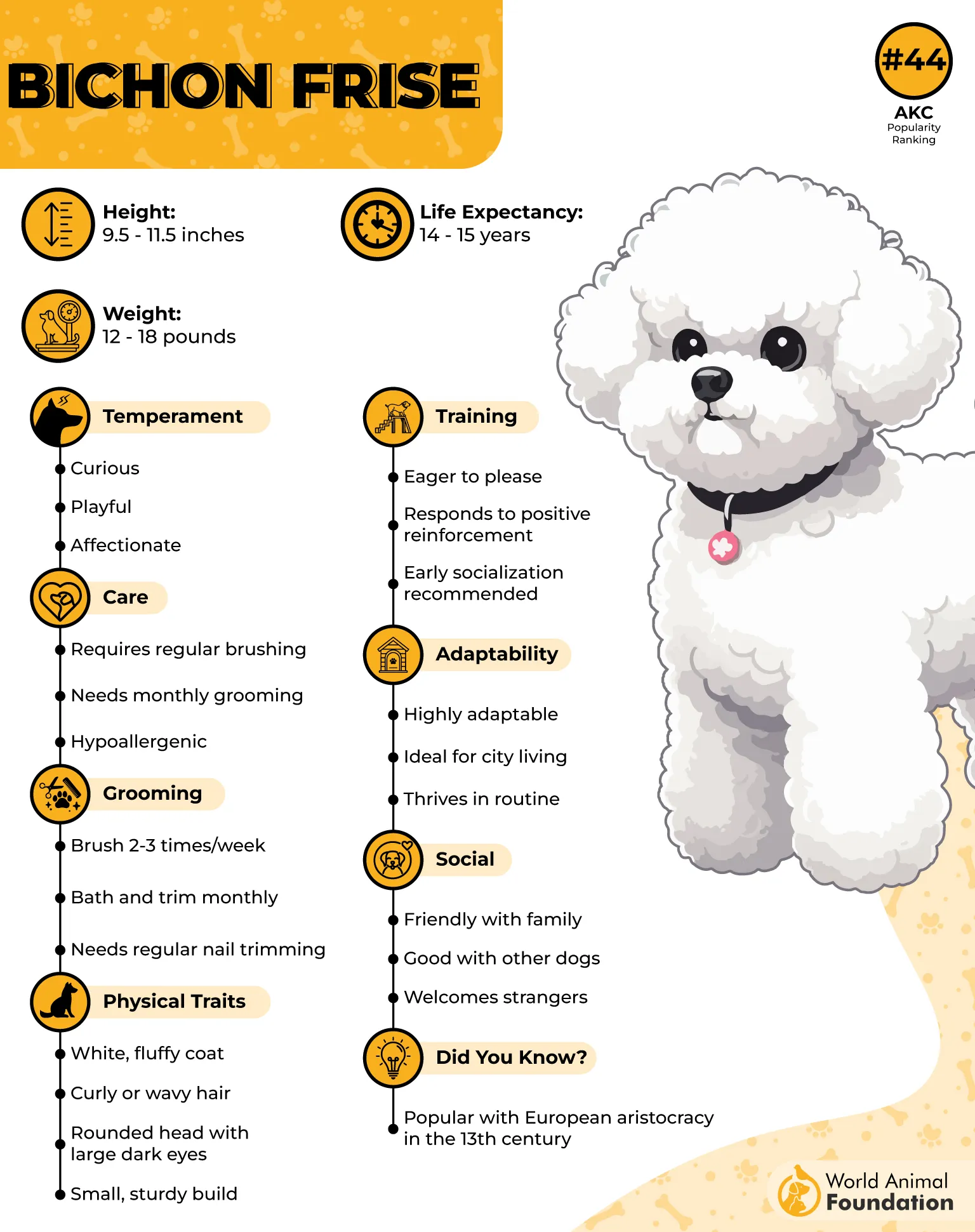
Coat Structure Hides Real Size
The coat is double-layered, with a soft undercoat and a coarser outer layer that forms tight corkscrews. When trimmed, the dog underneath is notably lean and compact. Groomers often describe the actual body as smaller than it first appears.
Calm Spatial Awareness
Bichons don’t charge into a room—they assess it. They’re observant around furniture, people, and animals, adjusting their pace instead of rushing. This tendency makes them particularly well-suited for homes with fine objects or delicate layouts.
Conclusion
Compact dogs may be small in size, but they leave a big mark on everyday life. These breeds work well for tight homes, travel-filled routines, or anyone who prefers less space but more heart.
Many are affectionate companions who stay close without being clingy, and some are even active in dog sports despite their small frames. A few have a fluffy coat that needs regular grooming, while others require almost minimal grooming.
Whether you’re drawn to a bold barker or a quiet shadow, there’s a compact dog for every lifestyle. With proper socialization, even the most confident toy-sized breed can thrive in busy households or calm corners. From expressive eyes to clever instincts, their details are small, but never forgettable.


